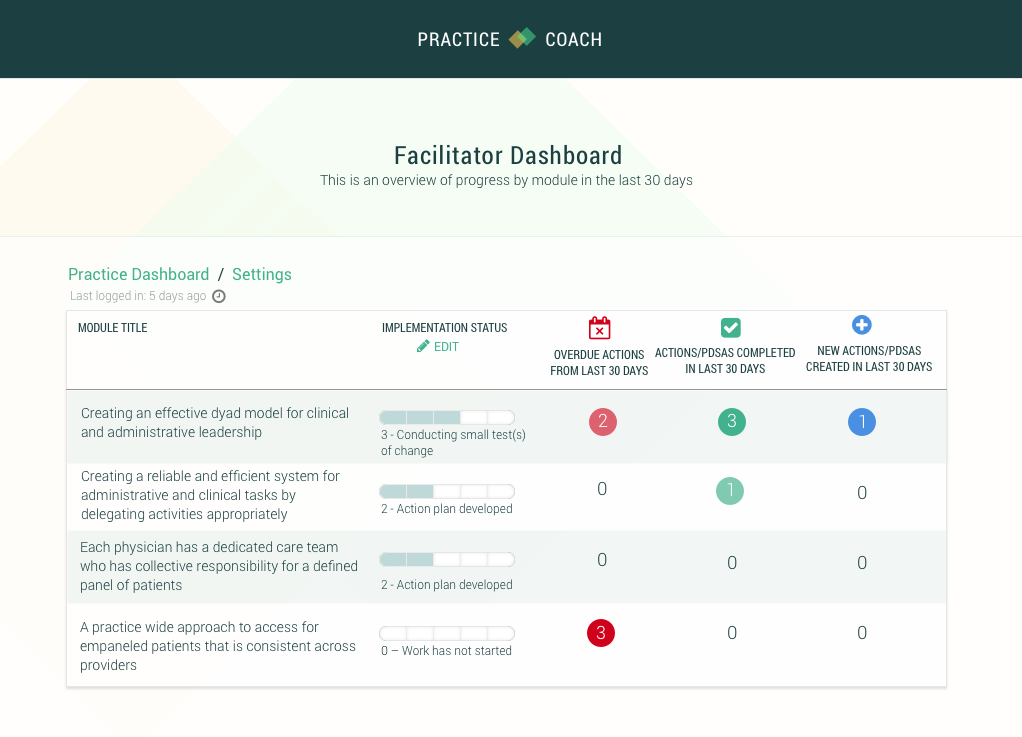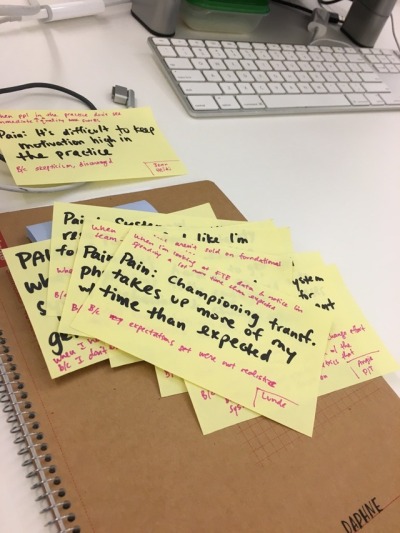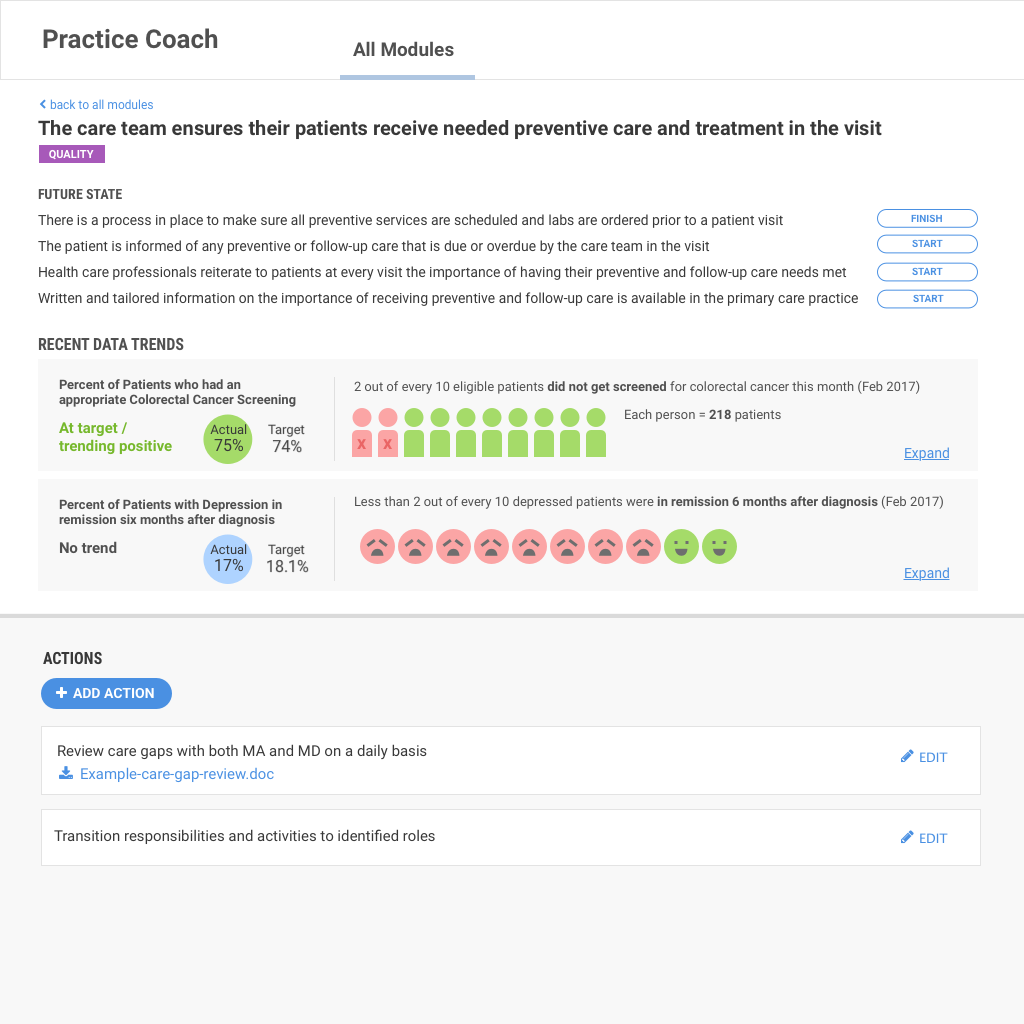PracticeCoach: Transforming Primary Care
PROBLEM
The mission of Peterson Center on Healthcare is to reduce healthcare cost in the United States, while maintaining quality of care. At a total spend of approximately $3.4 trillion, or 18 percent of the national economy, the U.S. healthcare system is the most expensive in the world. Yet, our health outcomes are worse than many other nations. Americans often endure unnecessary, ineffective, or even harmful treatments, lowering the quality of their lives.
ACTION STEPS
- Peterson Center partnered with Stanford University's Clinical Excellence Research Center (CERC) to identify primary care practices that are offering exceptional high quality, low cost care. This led to identification of 10 features that contribute to high value care. Those 10 features were then broken down into an actionable curriculum, and were used to help average performing practices improve their performance.
- As the lead designer and researcher, I led user research and design of a digital toolkit that helps primary care physicians and practice managers transform their practice to provide high quality, low cost care, while creating joy in practice.
USERS
The toolkit has two primary users: Facilitators (humans who help practices implement this change); Practice staff (physicians and practice managers) who implement the change in their practice.
SOLUTON
The digital toolkit (PracticeCoach) consists of:
- Project management tools such as assessing current state, creating work plans, and tracking goals.
- Data upload and visualization features that enables users to make informed decisions
- Communication and feedback features such as adding notes and comments that keeps facilitators informed about a practice's progress.
Evidence Based Content Distribution
The Peterson Center on Healthcare evidence-based content is distributed via PracticeCoach, and modules are made available to practices based on their goals and priorities
Plan and Implement Workflow Changes
Staff can track and manage actions to help make progress towards achieving a future state of high
Monitoring
Facilitators can at a glance see which practices have the most actions, who is taking these actions within the practices, and what time period these actions took place
Tracking Outcomes and Progress
Data leads at practices can track the outcomes of workflow changes and see progress against measures that matter to practice members
IMPACT
At a high level PracticeCoach (the digital toolkit) helps
- Facilitators be more efficient by automating a no. of processes such as data processing
- Facilitators be more effective by standardizing processes such as assessment and goal tracking
- Reduce the burden of change for practice users
Facilitators use PracticeCoach to:
- Keep everything in one place rather than in many different places (such as excel sheets, notebooks, trello etc.)
- Prioritize how much time to spend on each practice by comparing practices through automated dashboards
- Motivate practices by celebrating small wins easily
Physicians and Practice Managers use PracticeCoach to:
- Start from where they left off, not from scratch. Allows practices to assess where they are, and make customized workplans.
- Enable transparency and get buy in from rest of staff by having open access to workplans
- Use examples and tools from other practices to accelerate the change process
- Make informed decisions based on actionable insights through data
Conducting Research with users and stakeholders
Methods Used:
- Contextual Inquiry
- Qualitative Interviews
- Paper prototyping
- Low fidelity prototyping
- Ideation workshop
- Observation













